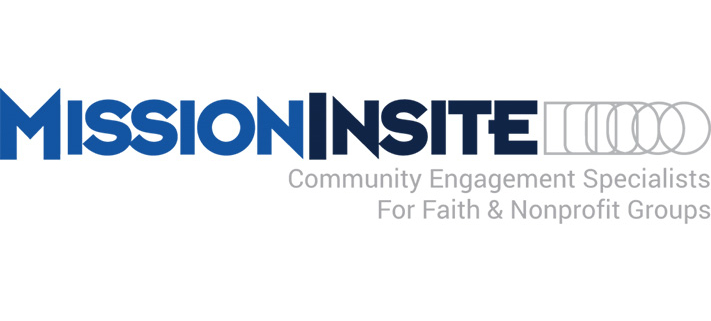MissionInsite – Know Your Audience
If you Google “know your audience,” you will find that the first returns are all about marketing. To sell a product, you need to know your audience. Yet we don’t “market” the gospel. We proclaim it. Moreover, we do so with the confidence that the power behind our proclamation isn’t some clever hook we use to reel in our “audience.” The power behind our gospel proclamation is the Holy Spirit himself, who with supernatural power leads people to believe things that are offensive to their human reason and sinful nature. Frankly, you can’t “market” the Scripture. The sinful nature would let no one “buy it.” It’s entirely up to the Spirit.
That does not mean it isn’t helpful to know your audience when conducting ministry. It absolutely is. In 2 Timothy, Paul tells us that one of the qualifications for public ministry is “correctly teaching the word of truth” (2:15). That begins with rightly dividing law and gospel, but it doesn’t end there. A fuller reading of Scripture demonstrates that “correctly teaching” would also include using reason in a ministerial capacity to determine how best to share the gospel with our specific audience. (Look at Acts 17 for a great example of this.) Thus, know your audience.
To help you do this, WELS Congregational Services and the Board for Home Missions have contracted with MissionInsite to give you access to comprehensive demographic data. MissionInsite data is fresh, updated every six months. Utilization of this powerful tool is free for every WELS congregation. Other WELS entities—like area Lutheran high schools or district mission boards—can also use MissionInsite for free and will find the information it provides valuable.
Learn how to GET MissionInsite for FREE! Once registered, you can use the information about your community to begin wrestling with all sorts of tactical ministry questions.
- Would starting a preschool be a good way to create opportunities to share the gospel in your community? Or would senior ministry create more opportunities, given the demographics? (If you can do both, fantastic. But congregations do not have unlimited resources. So good stewardship may require you to use demographics to make a sound judgment.)
- Would your church be able to serve more people with the gospel if it operated as a multisite ministry—two or three campuses spread apart? If so, what might be the best locations in your area to consider starting another campus?
- If you are on a district mission board, what are the fastest growing cities in your district that also have the lowest number of Christian churches per capita?
I want to encourage you to use MissionInsite with a discerning heart. The way some information is provided would make it easy to let “marketing” trump gospel confidence.
For example, one of the reports in MissionInsite breaks your population down into Mosaic groups and segments, such as marketing classifications of population by age and worldview. In other words, that report will not just tell you how many Baby Boomers you have in your area, but it also will break them into subgroups. There is the group called “Booming with Confidence: Golf Carts and Gourmets.” Those tend to be couples in their 60’s who are more conservative types. But there’s also a group called “Blue Sky Boomers: Rooted Flower Power,” who tend to be a bit hippy-ish.
Some of this detail is beneficial. Mosaic group data can tell you if using direct mail in your parish area is a good tactic, if it might be better to use Facebook ads, or if it might be better to utilize door-hanger canvassing. Mosaic group data can tell you about certain widely-held religious views in your community. There is some use to this, but there are also two potential dangers.
The first is that the leaders in your church begin to view people homogenously rather than as individuals. Yet the rubber hits the road in gospel proclamation in a one-on-one exchange. A Christian sits down with someone who is an unbeliever, or at least a dischurched weak believer. That Christian listens. He gets to “know the audience.” The Christian is now able to “correctly teach the word of truth” in that situation, to share the message that individual needs to hear at that time. If a church gets too caught up in demographic study, it can lose sight of the fact that the greatest spiritual impact is made, not in trying to reach an entire group, but in trying to reach individuals one-on-one.
The second danger is mentioned in the first paragraph—congregations conflating marketing with evangelism. Marketing can help pull an individual into a group which might be called “a church.” Marketing can’t pull an individual into the Church. That’s what matters. Being a member of your congregation will do absolutely no good on the Last Day. If one is going to stand on that day, he must be a member of the Una Sancta, the one, true Church that you joined when the Spirit gave you the gift of faith. Marketing cannot create faith. Evangelism—the proclamation of the gospel, which is “the power of God for salvation”—can (Romans 1:16).
I pray that MissionInsite serves you well. It will, if you use it well. Use it to help you know your audience. But as you go to your audience, don’t “market.” Proclaim.
Written by Jonathan Hein
P.S. – Training resources are found on the MissionInsite website. They also offer technical support. If you have questions about how to use the site, please contact MissionInsite directly. They can answer the question better than anyone in the synod offices. However, if you have any trouble in getting registered to use the site, please contact Maxine Neumann at [email protected].
WELS Congregational Services
Learn about the ministry work of WELS Congregational Services.
Give a Gift
You can make a difference. Your prayers and gifts can help WELS ministries carry out their missions.



